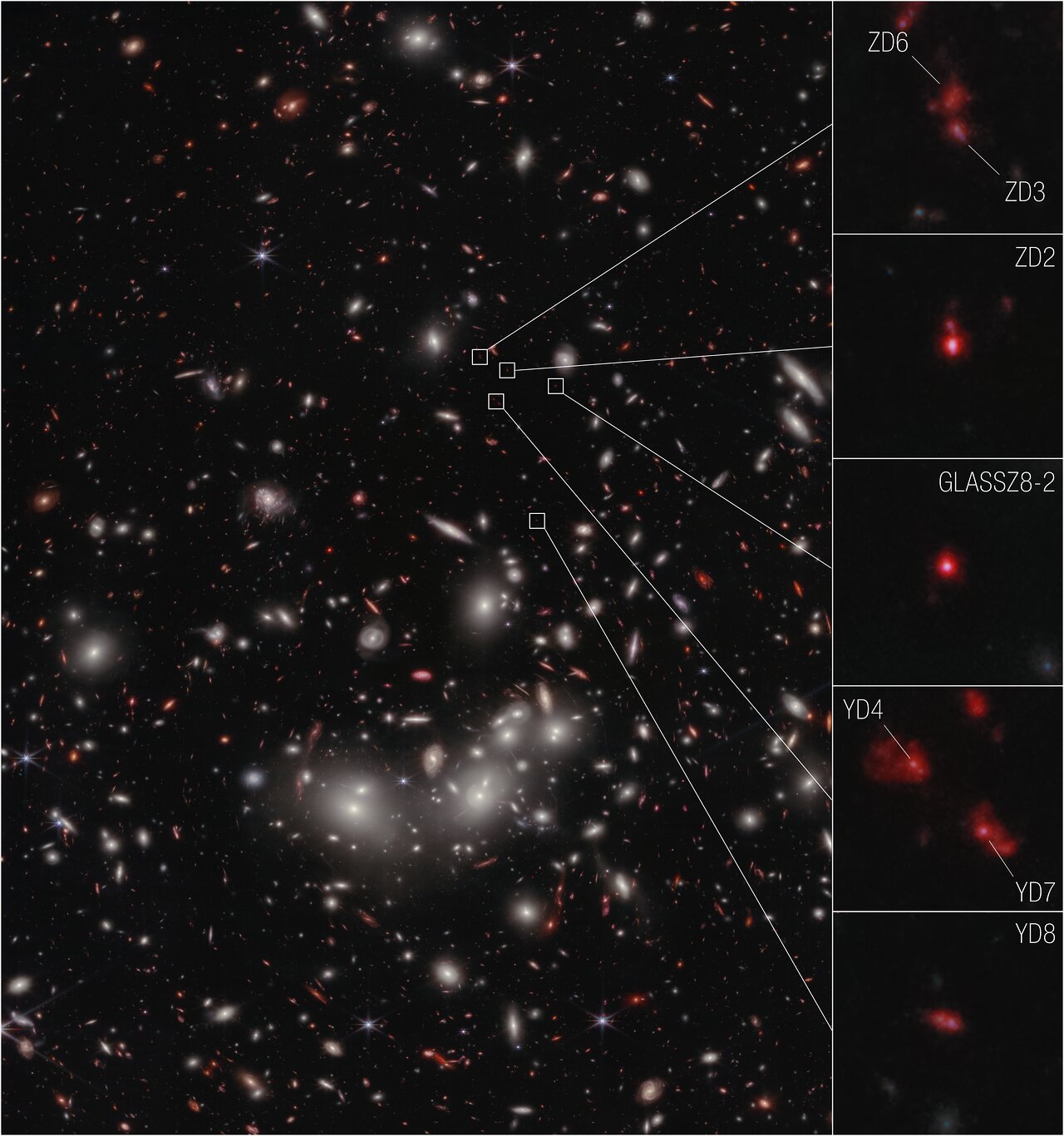Colours & filters
| Band | Wavelength | Telescope |
|---|---|---|
| Infrared | 1.15 μm | James Webb Space Telescope NIRCam |
| Infrared | 1.5 μm | James Webb Space Telescope NIRCam |
| Infrared | 2.0 μm | James Webb Space Telescope NIRCam |
| Infrared | 2.77 μm | James Webb Space Telescope NIRCam |
| Infrared | 3.56 μm | James Webb Space Telescope NIRCam |
| Infrared | 4.44 μm | James Webb Space Telescope NIRCam |
Webb reveals early-Universe prequel to huge galaxy cluster
The seven galaxies highlighted in this image from the NASA/ESA/CSA Telescope have been confirmed to be at a distance that astronomers refer to as redshift 7.9, which correlates to 650 million years after the big bang. This makes them the earliest galaxies yet to be spectroscopically confirmed as part of a developing cluster.
The seven galaxies confirmed by Webb were first established as candidates for observation using data from the NASA/ESA Hubble Space Telescope’s Frontier Fields program. The program dedicated Hubble time to observations using gravitational lensing, to observe very distant galaxies in detail. However, because Hubble cannot detect light beyond near-infrared, there is only so much detail it can see. Webb picked up the investigation, focusing on the galaxies scouted by Hubble and gathering detailed spectroscopic data in addition to imagery.
Astronomers used Webb's Near-Infrared Spectrograph (NIRSpec) instrument to precisely measure the distances and determine that the galaxies are part of a developing cluster. Galaxy YD4, previously estimated to be at a further distance based on imaging data alone, was able to be more accurately placed at the same redshift as the other galaxies. Before Webb, astronomers did not have high resolution imaging or spectral infrared data available to do this type of science.
At extreme distances, astronomers use the redshift reference to account for the fact that, as the universe expands, wavelengths of light are stretched and “shifted” to redder wavelengths, which are longer. Shorter wavelengths, for example ultraviolet and X-ray, are toward the bluer end of the electromagnetic spectrum. So extreme distances in the early universe are referenced by how much the light emitted there has been shifted as it travelled through space to be detected by a telescope.
The results have been published in the Astrophysical Journal Letters.
Credit:NASA, ESA, CSA, T. Morishita (IPAC), A. Pagan (STScI)
About the Image
| Id: | protocluster-1 | |
|---|---|---|
| Type: | Collage | |
| Release date: | 24 April 2023, 16:00 | |
| Size: | 11319 x 12083 px | |


